Blueberry "Elizabeth": description of the variety, cultivation and care
Today it has become fashionable to grow wild berries on the site. The blueberry "Elizabeth" planted in the garden will not only delight with the harvest, but will also become a real decoration of the dacha, especially in the autumn, when the foliage of the bush turns yellow-purple.
The variety was bred in America several decades ago, but has not yet been officially registered in Russia. Despite this, "Elizabeth" is popular with summer residents due to a large number of its advantages.
Description and characteristics of the variety
Blueberries of the "Elizabeth" variety are medium-late varieties. An adult shrub reaches a height of 1.5-1.7 m. Reddish erect shoots are prone to branching, have dense foliage. Over time, the branches become lignified and covered with light brown bark. Due to the spreading crown, blueberries of this variety require a lot of space, which must be taken into account during planting.
The leaves of the shrub are medium-sized, dark green, covered with a bluish bloom. Like other blueberry varieties, "Elizabeth" has a superficial fibrous root system without suction hairs. The shrub is best propagated by green cuttings in spring and summer.
The flowering period begins in late May or early June (timing depends on the region). The flowers are bell-shaped, 1–1.5 cm in size, white in color.
For a more abundant crop, it is best to plant Elizabeth blueberries alongside other varieties that are blooming at the same time. As pollinators, it is suitable for:
- "Jersey";
- Darrrow;
- "Nelson";
- "Bluecrop".
The first ripe berries appear on the bush in early August. When describing the variety, it is worthwhile to dwell separately on the characteristics of blueberry fruits:
- shape - rounded, slightly flattened;
- size - from 1.5 to 2.2 cm in diameter;
- berry weight - 1.6-2.5 g;
- color - blue, with a dense waxy coating;
- the skin is tender, not prone to damage;
- the pulp is dense, greenish in color.
Blueberries are easy to pick because the berries are gathered in a brush. Ripe fruits are easily removed from the bush. The fruiting period lasts approximately 2–3 weeks. Ripe blueberries are not prone to shedding.
Tasters highly appreciate the taste of this variety. The taste of blueberries is intense, bright, sweet, somewhat reminiscent of both grapes and currants. The berries also have a thick aroma. In terms of taste, Elizabeth blueberry is recognized as one of the best garden varieties.
The fruits are easily transported, they can be stored in the refrigerator for some time. To benefit from the delicious berries, they are best consumed fresh. Blueberries can also be used for compotes, juice, preserves, jams, and added to desserts.
Up to 4–6 kg of berries are obtained from one plant. By creating ideal conditions for growth, a shrub can increase yields by an additional 2–2.5 kg.
Advantages and disadvantages of the variety
Those who have been growing Elizabeth blueberries for many years speak well of it. Among the advantages of the variety, summer residents distinguish the following qualities:
- resistance to winter frost (up to -35 ° C);
- high yield rate;
- excellent transportability;
- strong immunity;
- excellent taste.
Despite the obvious advantages, this type of culture also has a number of disadvantages. The productivity of the shrub may decrease due to late spring frosts and early autumn cold snap.
Taking into account the influence of the weather, it is not necessary to speak about the stability of crops. In cold regions, planting in closed ground solves the problem.Blueberries also have certain requirements for the soil - the acidity index should not go beyond 3.5-4 pH. Due to its strong growth, the shrub requires regular pruning.
Selection of seedlings and planting sites, timing
For planting, seedlings are chosen that are 2 or 3 years old. It is better to give preference to bushes with a closed root system, they are sold in plastic containers. The plant must be healthy, free of suspicious spots, damage, dried shoots.
Well-developed roots are white and protrude from the drainage holes. You can carefully pull the seedling out of the container and inspect the root system to make sure it is in good condition.
Dates for planting seedlings:
- The best time to plant is spring. This period is suitable for all regions.
- In the southern regions, blueberries can also be planted in the fall, the shrub will have time to take root before the arrival of cold weather and winter safely.
- Summer is not a good time to plant and transplant blueberries. Due to the possible heat, the roots may suffer from drought and the plant will die.
On the site for blueberries, an illuminated place with protection from strong winds is chosen. The soil should be light, nutritious, with a suitable acidity level (3.5–4 pH). When the soil is alkalized, the mycorrhiza living on the roots of blueberries dies, which helps the shrub to absorb nutrients. As a result, the plant begins to wither, the case may end in its death.
Do not plant Elizabeth blueberries in low-lying areas where cold air stagnates. During flowering, buds are more likely to suffer from recurrent frost.
Various vegetables are categorically unsuitable as precursors to blueberries. It is best to plant a shrub where wild grasses used to grow.
Planting and leaving
The seedlings are planted at a distance of 1.5 m from each other, the row spacing should be 2.5 m. A week before planting, a hole is dug 50 cm deep and 60–80 cm in diameter.
The soil will need to be mixed with additional components:
- high-moor peat;
- river sand;
- rotted sawdust;
- pieces of bark;
- needles.
Such a composition will make the earth looser and sour. During planting, a drainage from large chips or bark is laid on the bottom of the pit, and then prepared soil is poured, on which a seedling is placed with a slight deepening (by 4–5 cm). If the roots of the shrub are bent upward, they are pre-soaked for 1 hour, and then gently straightened.
After planting, the soil around the seedling is compacted and watered, consuming 10 liters of water in small portions. Then the root zone is mulched with a mixture of peat, coniferous litter and rotted sawdust. Gradually decomposing, the mulch will nourish the blueberries, as well as maintain the necessary level of soil acidity.
Plant care includes:
- watering 2-3 times a week (the frequency is regulated by the weather);
- top dressing with complex fertilizers for berries 3 times a season (from the 2nd year of planting);
- loosening the soil after rain and watering (no deeper than 5 cm);
- renewal of the mulch layer in spring and autumn;
- preventive treatments in March and October (2% Bordeaux mixture or copper sulfate solution of the same concentration).
It is important to monitor the acidity of the soil and maintain it at the required level. In the event that the soil becomes more alkaline, watering is carried out with acidified water (2 tsp citric acid or 100 ml of 9 percent vinegar per 10 liters of water).
Because of the tendency of Elizabeth blueberries to branch, the cultivar needs regular pruning:
- In the spring, every year they cut out all the dried, broken, frozen branches and those shoots that thicken the crown.
- If necessary, additional pruning can be done in late summer or fall.
- Starting from the 4th year, the shrub is pruned in order to rejuvenate, removing the lower tier of branches.
For successful wintering in cold regions, blueberries are mulched in autumn with a thicker layer and additionally shovel snow to the bush.
For industrial cultivation of blueberries "Elizabeth" is not very suitable because of some features of agricultural technology, but for private farmsteads planting a shrub will be quite appropriate. With proper care, one plant can produce up to 8 kg of tasty and healthy berries. The climatic versatility of the variety makes it even more attractive to gardeners.
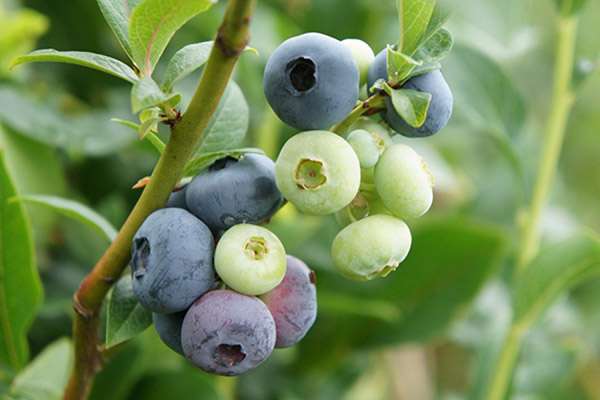

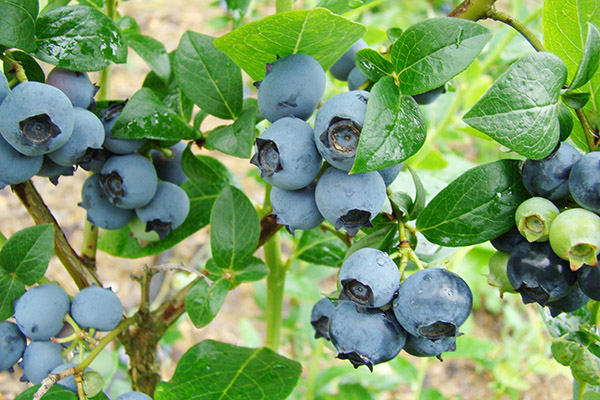
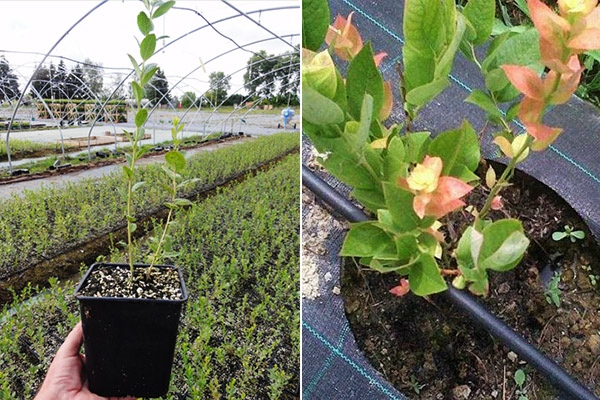
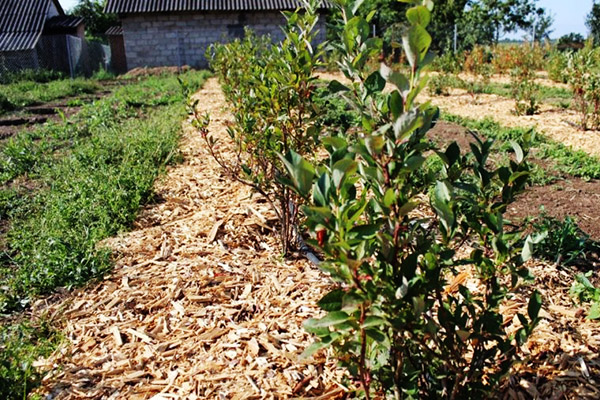
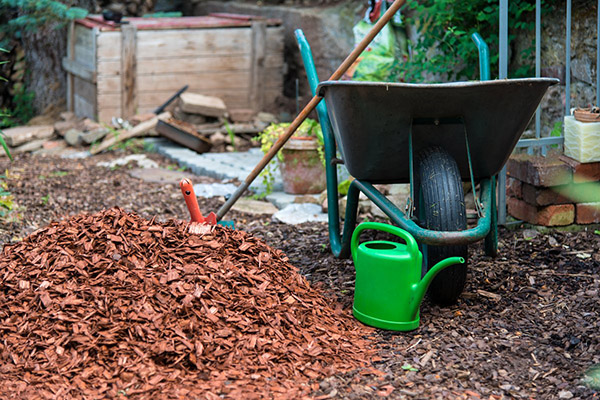
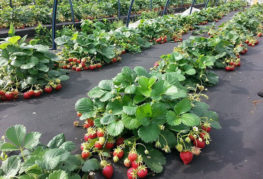
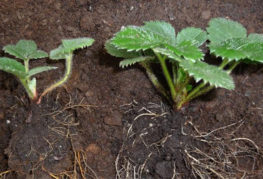
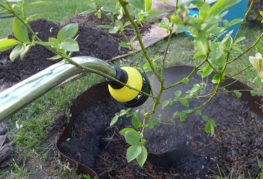

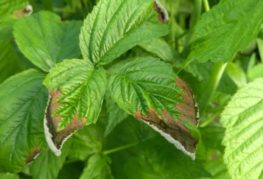
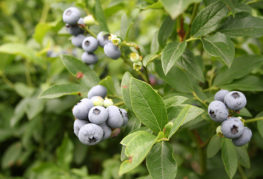
and will be published shortly.